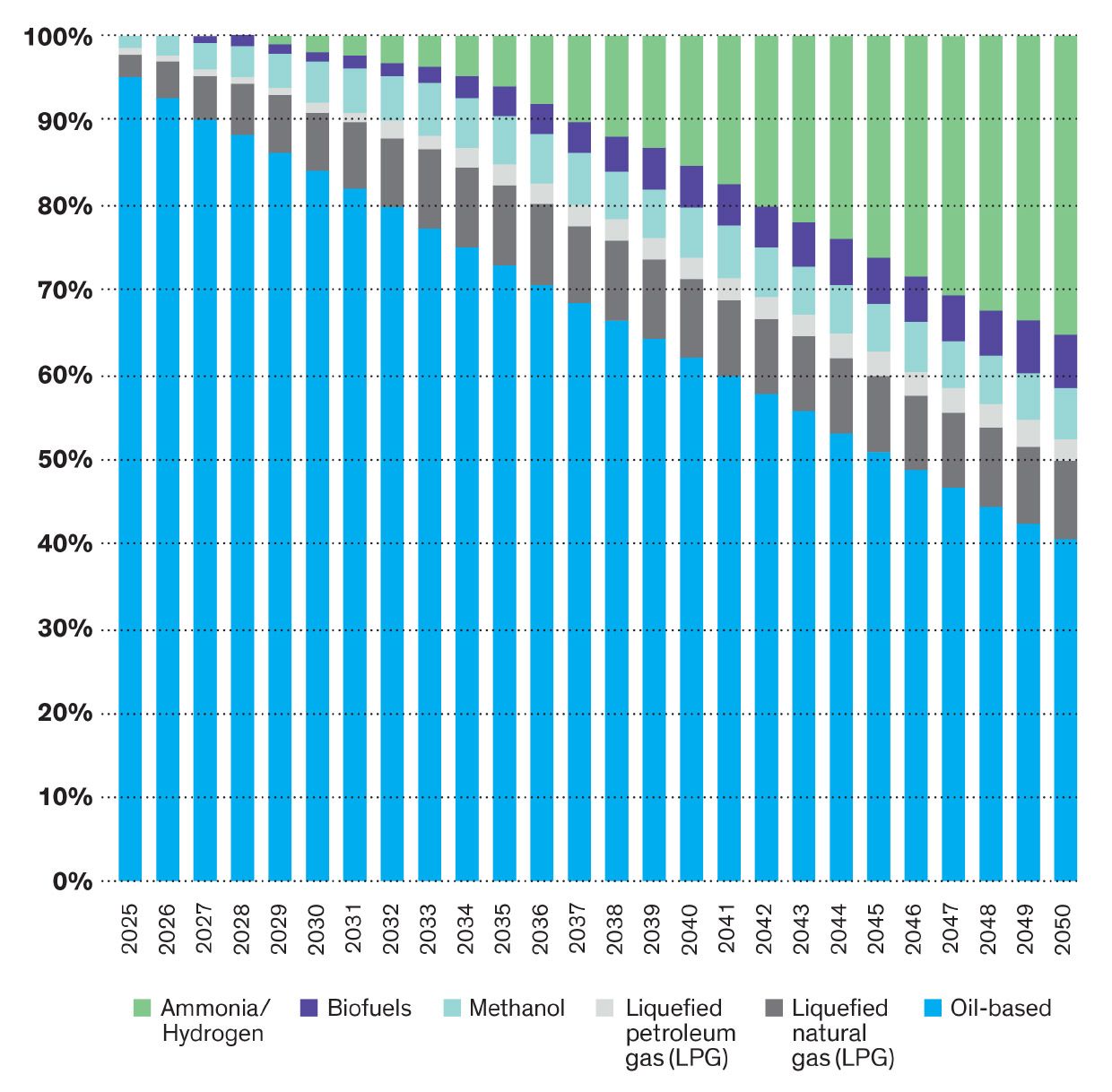From the brainiacs at IEEE Spectrum. February 23:
Ammonia engines and fuel cells could slash carbon emissions
There’s a lot to like about ammonia. This colorless fuel emits no carbon dioxide when burned. It’s abundant and common, and it can be made using renewable electricity, water, and air. Both fuel cells and internal combustion engines can use it. Unlike hydrogen, it doesn’t have to be stored in high-pressure tanks or cryogenic dewars. And it has 10 times the energy density of a lithium-ion battery.
For all these reasons, ammonia (NH3) is gaining favor in the global shipping industry, a multitrillion-dollar machine in need of cleaner fuels to power the freighters and tankers that haul manufactured goods and bulk materials across the ocean. Shipping companies seek climate-friendlier alternatives to petroleum that can propel their behemoth vessels for days or weeks at sea and still leave room on board for cargo.
Maritime shipping contributes nearly 3 percent of annual carbon-dioxide emissions, according to the International Maritime Organization (IMO), the United Nations body that regulates the industry. In 2018, delegates agreed to reduce emissions by 50 percent from 2008 levels by 2050. Meeting that target will require swift and widespread development of diesel-fuel alternatives and new designs for freighters, tankers, and container ships.
Shipowners and industry analysts say they expect ammonia to play a pivotal role in decarbonizing cargo ships. But there’s a crucial caveat: No vessels of any size today are equipped to use the fuel. Even if they were, the supply of renewable, or “green,” ammonia produced using carbon-neutral methods is virtually nonexistent. Most ammonia is the product of a highly carbon-intensive process and is primarily used to make fertilizers and chemicals.
Recently, though, a handful of projects aim to change that. Finland’s Wärtsilä plans to begin testing ammonia in a marine combustion engine in Stord, Norway, by late March. Germany’s MAN Energy Solutions and Korean shipbuilder Samsung Heavy Industries are part of an initiative to develop the first ammonia-fueled oil tanker by 2024.
Also by 2024, the Viking Energy is poised to become the first vessel propelled by ammonia fuel cells. The Norwegian energy company Equinor (formerly Statoil) charters this offshore supply vessel, which currently runs on liquefied natural gas. Chemical giant Yara will provide the green ammonia, which it plans to produce at a plant in southern Norway.
The initiative “will open up a completely new option for zero-emission shipping,” says Henriette Undrum, Equinor’s vice president of renewable and low-carbon technology. “We are not just solving one small problem for one ship. It’s part of the bigger picture. It will be a starting point to build up the market for zero-carbon fuels.”
Still, industry experts say that revamping the global shipping fleet will be extraordinarily expensive. Researchers estimate that up to US $1.4 trillion will be needed to achieve the IMO’s emissions-reduction target. And fully eliminating emissions will require an additional $500 billion, according to a January 2020 study by a panel of maritime experts....

....MUCH MORE